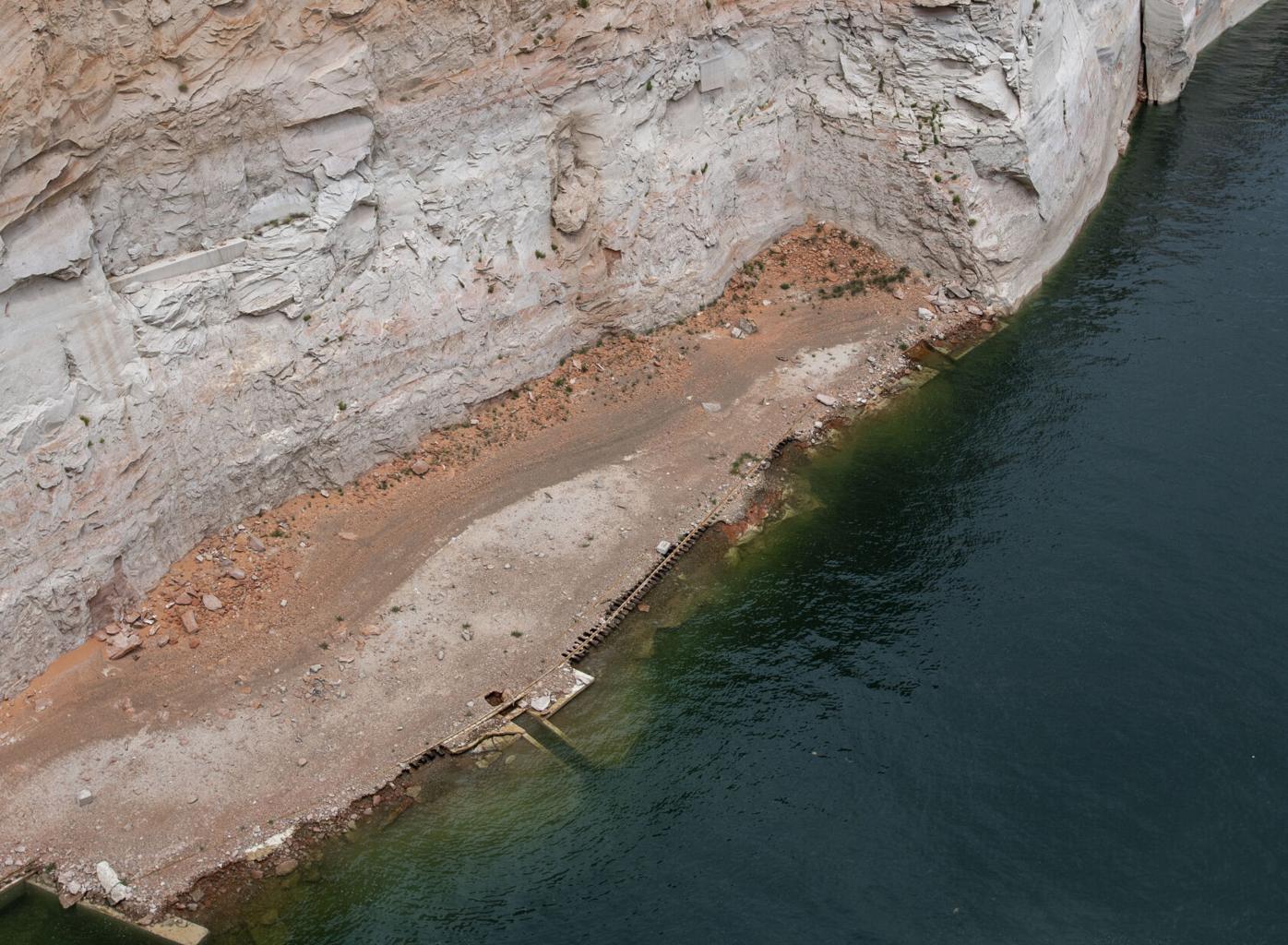California takes major step to cut back on use of Colorado River water
California water providers, in a letter Wednesday to the U.S. Bureau of Reclamation, announced they would conserve up to 400,000 acre-feet annually of Colorado River water in Lake Mead, beginning in 2023 and continuing until 2026.
“This water, which would otherwise be used by California’s communities and farms, will meaningfully contribute to stabilizing the Colorado River reservoir system,” said the letter from a coalition of some of the largest water providers in the state. That’s the Imperial Irrigation District, the The Metropolitan Water District of Southern California, the Coachella Valley Water District and the Palo Verde Irrigation District.
California is far and away the largest consumer of Colorado River water, with some 4.4 million acre-feet allotted every year from the dwindling supplies.
The state’s announcement comes months after federal officials, including Bureau of Reclamation Commissioner Camille Touton, asked the seven states of the Colorado River Basin to come up with 2 million to 4 million acre-feet of water savings, in an effort to protect water levels at Lake Mead and Lake Powell.
Twenty-two years of drought have resulted in critically low water levels at Lake Mead. As of Oct. 5, it’s at 1,045.3 feet depth. The minimum level for Hoover Dam to generate power is 950 feet; below that, the Southwest would have to rely on fossil fuels for power generation. Lake Powell is at 2,439.6 feet depth as of Oct. 5, or about 24% full. Its Glen Canyon Dam supplies power to Wyoming, Utah, Colorado, New Mexico, Arizona, Nevada, and Nebraska through the Western Area Power Administration. The dam’s hydropower capacity has already dropped to 60%.
Despite Touton’s demand, which included a warning that her agency would take action if the states did not, the agreement on how to conserve water in the coming year didn’t happen. The Colorado River Upper Basin states of Colorado, Utah, Wyoming and New Mexico came up with a five-point plan that did not outline any specific water savings. The Lower Basin states of Arizona and Nevada proposed a plan that could have resulted in about 2 million acre-feet of water conservation annually, but it was rejected by California and the federal government.
In August, Touton announced cutbacks in water allotments to Arizona, Nevada and Mexico that had been agreed upon in the 2007 interim guidelines for the river and 2019 drought contingency plans set up by the seven states.
California has the most senior water rights among the seven states and Mexico, and in the letter pointed out that the state’s water agencies “have voluntarily conserved nearly 2 million acre-feet of water supplies in Lake Mead since 2007 that has added more than 20 feet to Lake Mead elevations and aided other Lower Basin water users from experiencing previously agreed-upon shortage reductions that would have otherwise occurred as early as 2015.”
Arizona, which annually is allotted 2.8 million acre-feet annually, has seen its water from the Colorado cut by 21%, or 592,000 acre-feet. In a statement after Touton announced the latest round of cuts in August, Arizona water officials said it is “unacceptable for Arizona to continue to carry a disproportionate burden of reductions for the benefit of others who have not contributed.”
In that same announcement, Nevada was told to cut its Colorado River water by 25,000 acre-feet from its annual allotment of 300,000 acre-feet. Mexico, which receives 1.5 million acre-feet annually, was cut by 104,000 acre-feet.
The 1922 Colorado River Compact and agreements and laws in the ensuing years have dictated that the Colorado River would supply 15 million acre-feet of water annually to the seven states, but that allotment was based more on economics and politics rather than hard science, according to experts. The river’s current flow is estimated at about 12 million acre-feet in good years.





